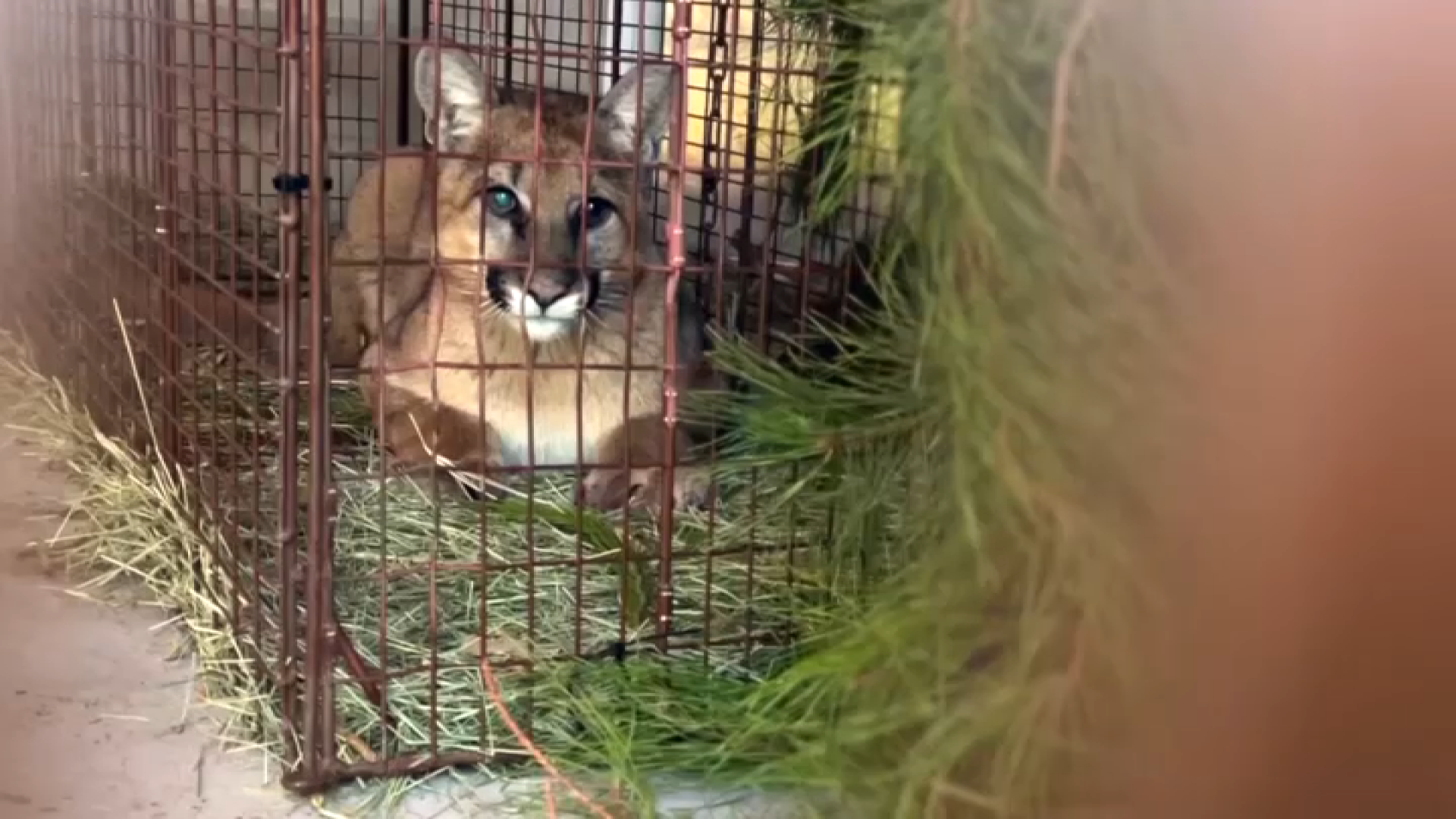A fire recently burned through vegetation at the MCAS Miramar landmark. But biologist Chuck Black says he’s disappointed more didn’t burn. NBC 7’s Brooke Martell has more on why.
If state Route 52 is part of your commute near Convoy, well, then, you've been driving by a natural phenomenon that has been studied since the late 1800s.
The Miramar Mounds National Natural Landmark sprawls across 415 acres of MCAS Miramar Base. Back in 1972, the site was established by the National Parks Service at the request of the United States Navy.
Just last month, a brush fire moved right along SR-52 and burned through vegetation at the landmark. MCAS Miramar biologist Chuck Black said, though, that the fire was a good thing for the open land.
”I’m just sad that more of the landmark didn’t burn, as I was telling the landfill biologist,” Black said. ”He said, 'We tried to get it out as fast as we could,' and I said, 'I wish you’d let it burn for a few more hours.' ”
Get top local stories in San Diego delivered to you every morning. Sign up for NBC San Diego's News Headlines newsletter.
Those are sentiments not usually heard following a fire in San Diego County
”This area that looks so devastated now with burnt shrubs and stuff — probably in two or three years you won’t even be able to tell there was a fire here,” Black said.
The marks from the fire are still visible, and the smell of smoke lingers on the vegetation.
Local
“Even if the current seed crop is lost, there’s plenty to come back the next year," Black said. "The nutrient input from ash and everything only helps them grow bigger the next year,"
Black said the protected preserve has something not seen much of anymore, including vernal pools.
Dry in the summer and wet in the winter and spring months, the pools are almost like ponds and lagoons, storing water and recharging it into the ground. Those traits are why nearly 50 species call them home, but some populations are dwindling, including the endangered fairy shrimp and the spadefoot toad, which, Black said, is not quite on the endangered species list.
Plants are being weeded out too.
”San Diego mesa mint, button celery ... one called Orcutt grass,” Black said.
As their habitats were developed by man, Black said, the populations became smaller and smaller, which is why they’re endangered.
Even after decades of studying and conserving the precious resources, Black made a recent, rare find.
”Only know of three or four pools in Miramar that have this” Black said after examining a plant. “It’s called little mouse tails.”
After his discovery – a smile.
“This is like a birthday present, finding this, to me,” Black said.
Black called the space a natural laboratory, crediting Edith Purer.
“Starting in 1895 the first article was published here, and Edith Purer, California’s first botanist and ecologist, did her Ph.D. out here on the site and was a big advocate and preservation of vernal pools,” Black said.
Black draws inspiration from the space as he’s continued his work on the site, which has been ongoing since the mid-1980s.
“Every one of the 1,200 [vernal pools] out here, I personally know,” Black said. “In fact, I can show you my footprints because I come out in the wintertime and walk around the edge of the pools with a GPS unit to map these.”
Shortly after our interview with Black concluded, he showed us some of his footprints.
Looking ahead to next spring, if there's a good rainy season ahead of it, Black said, the space could be covered in wildflowers specific to the area.
”So if this is a good year, spring next year, these upland areas will probably be like someone’s flower garden,” Black said.
While Black said about 98% of vernal pools have been developed, other spaces like Camp Pendleton are following similar tactics to protect vernal pools.



